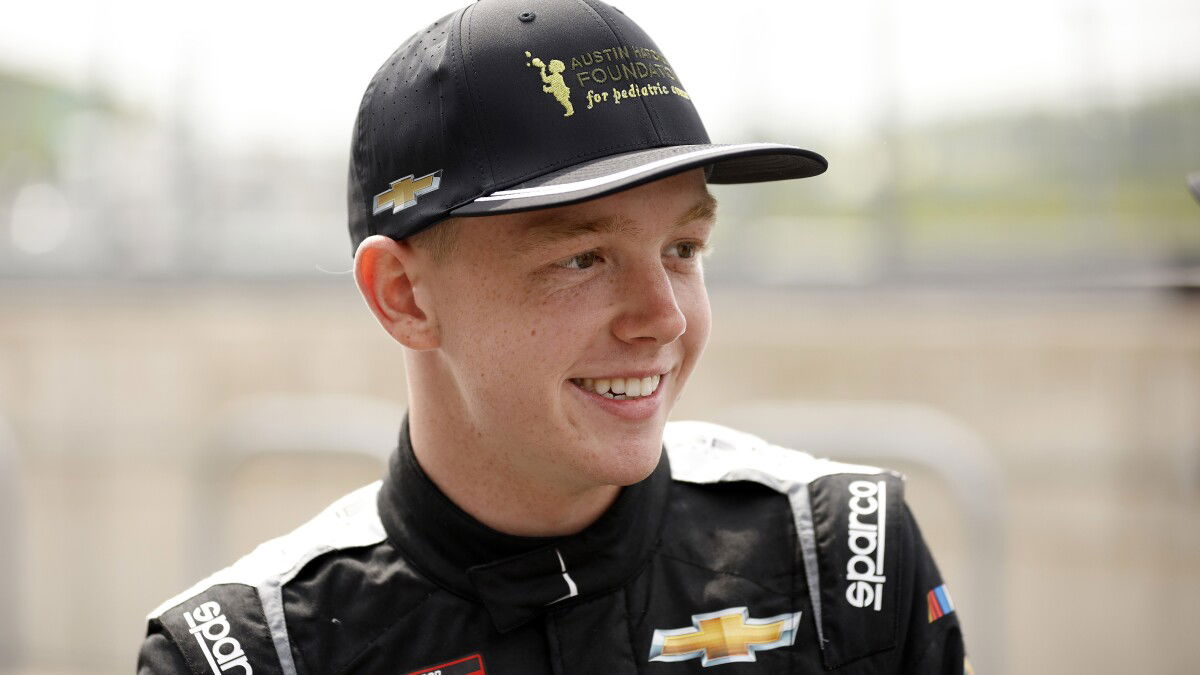Connor Zilisch entered Watkins Glen riding a wave of momentum. The teenage phenom was eyeing yet another Xfinity Series triumph in what has been a breakout season. And that’s exactly the form he took into the race. From the moment he secured pole position, the 19-year-old star looked untouchable. He led 60 of 82 laps and fended off every late challenge to take the checkered flag in a comfortable fashion. But the celebrations quickly turned into chaos. As Zilisch climbed onto his No. 88 in Victory Lane, a slip sent him crashing to the ground, resulting in a broken collarbone. With all this happening a day before the big race, Justin Marks revealed the reason they could not field another driver in his place.
While the injury explained why Zilisch could not drive, it did not explain why the team chose not to slot in a replacement driver, especially when the car, crew, and entry were already in place. The team initially appeared set to field the car with a substitute. However, the abrupt decision to pull the entry raised questions beyond logistics. And Justin Marks later hinted that he may not have been the sole decision-maker.
Red Bull’s loud voice behind the NASCAR race decision
Red Bull returned this year as a headline sponsor for Trackhouse, backing both Shane van Gisbergen and Connor Zilisch. The big money sponsor anchored the No. 87 program as a visible, developmental Cup initiative. Zilisch has rapidly become one of NASCAR’s brightest prospects, earning Xfinity wins and Cup track time. With Zilisch sidelines, the backup driver opportunity might have carried its own sponsorship value for this race. Given the visibility of Watkins Glen and the available opportunity, it seemed logical that Trackhouse could plug in another driver to maximize exposure and gain valuable data.
When asked why the team did not replace Zilisch for the Glen, Marks pointed directly to the original intent of the program, “The program we built around the 87 car this year is really about Connor. It’s about getting Connor seat time in the Cup Series and preparing him for his future.” He revealed that the team considered multiple scenarios before arriving at their decision. “Red Bull speaks loudly. They’re the ones paying the bill,” Marks admitted, noting that a late-night meeting with all parties involved led to the choice. The key concern, according to Marks, was “not to dilute that program, the sponsorship, or Connor as an athlete by putting somebody else in the car.” In his view, the integrity of the developmental plan outweighed the benefits of a one-off substitute.
Marks’ comment that “Red Bull speaks loudly” is not just a figure of speech. In top-level motorsport, primary sponsors often hold contractual rights over driver selection. Especially when a program is built entirely around a specific athlete’s image and marketability. Red Bull’s return to NASCAR was strategically tied to promoting van Gisbergen’s global crossover appeal and Zilisch’s rapid rise. Inserting a different driver into a Red Bull-liveried car at a high-profile venue was precarious. At Watkins Glen, it could have muddied the branding and reduced the focus on Zilisch’s trajectory. For Trackhouse, keeping the No. 87 parked sent a clearer message. This car exists for Zilisch, and the partnership’s value lies in that exclusivity. Marks injected some humor into the explanation, too. He joked that “I left my helmet at home.” But the underlying business calculus was unmistakable.
Looking ahead, Trackhouse must balance Zilisch’s recovery. His recent scans showed only a broken collarbone and no head injury. While another driver might have filled the weekend’s slot, the No. 87 appears firmly positioned as Zilisch’s vehicle forward. How quickly he returns, and whether Trackhouse will revert to “seat-for-development” or pivot now at this stage, will define the rest of their campaign.
Marks praised #87 driver’s commitment to Trackhouse
Trackhouse Racing’s No. 87 Cup car sat idle at Watkins Glen after Connor Zilisch’s post-race celebration injury in the Xfinity Series sidelined him for the weekend. Despite not being able to drive, Zilisch still made his way to the circuit. This was a move that caught the attention of team co-owner Justin Marks. The Trackhouse owner admitted he sees the teenager’s dedication as a sign of his long-term potential.
Zilisch, one of NASCAR’s fastest-rising prospects, has been central to Trackhouse’s Cup development program this season. The prodigy is Red Bull-backed and drives the No. 87, built specifically for his seat time and progression. His attendance at Watkins Glen underscored the relationship between driver and team. Even while recovering from a broken collarbone. This gave Marks a chance to highlight why presence matters as much as performance.
“I think it was important for him… He doesn’t want to be away. He wants to be at the racetrack…his whole life is about being a race car driver,” Marks said, adding that Zilisch still found value in the day by sitting in the bus with him and watching timing and scoring. For Marks, it was a clear message. Zilisch was committed to learning, improving, and supporting his team from the sidelines, even without a steering wheel in his hands.
Marks also noted that Zilisch “wanted to show the fans and show the sport that he was upright, he was okay, and that he’s committed and really wants to get back as fast as he can.” The young driver’s decision to be visible at the track despite the injury reinforced his connection to Trackhouse’s culture and goals. As Zilisch recovers, his off-track dedication could prove just as valuable as the laps he turns once he’s back behind the wheel.
The post Justin Marks Reveals $80B Sponsor’s Hand Behind Canceling NASCAR Team’s Entry appeared first on EssentiallySports.
